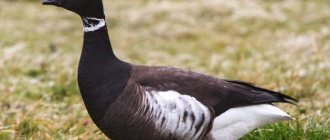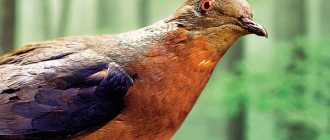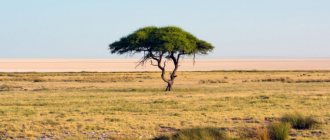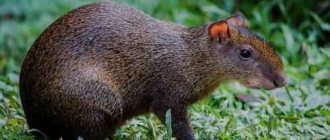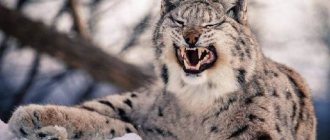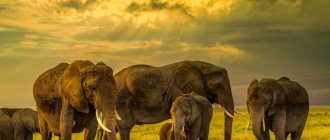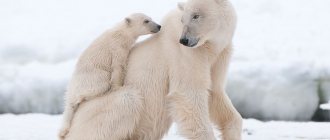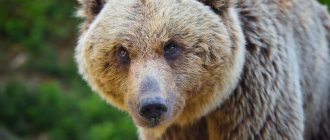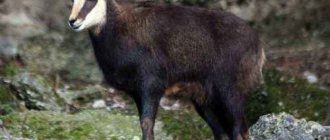Looking at the sky, sometimes you can see the mesmerizing flight of a hawk. This spectacle is available almost anywhere in the inhabited world, because its hunting grounds stretch from southern to northern latitudes. Each territory is filled by a specific species, and there are about 50 of them in the accipitridae family.
The fact that these birds appear in the beliefs of various peoples is due to such qualities as:
- speed;
- dexterity;
- proud posture;
- pockmarked feather colors;
- ominous look.
In addition, due to their lightning speed in hunting and bloodthirstiness, many proverbs have been written about these predators.
Where do hawks live?
Accipiter nisus) is a species of bird of prey from the hawk family (Accipitridae). Female hawks
-sparrowhawks are almost twice as large as males.
This species lives
mainly in forest areas and is distributed throughout almost all of Eurasia. Their prey is small and medium-sized birds.
Interesting materials:
Which islands belong to Eurasia? Which islands belong to Oceania? What islands are located off the coast of Australia? Which islands are of volcanic origin? What reports does a private entrepreneur submit on a general basis? What waste belongs to the first hazard class? What is the most hazardous waste? What waste constitutes hazard class B? What waste is included in TCO? What sectors of the economy are related to agriculture?
Habitat
Hawks settle almost everywhere, but preference in choosing a place of residence is given to well-visited places. It can be like a forest, mountain range or steppe. The main thing is that there is a more or less tall tree where you can build a nest , and it does not matter whether it is a coniferous or deciduous tree.
Some species of hawks build a nest once and use it until it begins to fall apart. Others organize a construction site every year, and they can be inconsistent, that is, one year the branches will be neatly laid out, the bottom of the nest is covered with moss, another year the branches will be draped somehow, and the moss will not even be remembered. Surveying its territory from the highest tree branch, the hawk carefully ensures that winged predators do not fly into the area . At the same time, he is loyal to other animals.
Marten
Who strangles chickens en masse at night? Farmers say they see something strange. Dark, very nimble and agile. It was like a shadow flashed through the chicken coop. And then she disappeared without a trace.
There are legends among people about the Chupacabra; supposedly this animal sneaks into a barn or chicken coop at night. Sucks blood from cattle and poultry. No one has ever seen the mythical creature. Only the shadow had to be seen. It will flash and disappear in the silence of the night... Has the chupacabra visited the chicken coop?
Alas, in our case it is an ordinary marten. That's who strangles the chickens! A cute animal, very dexterous and graceful. Visits human habitation not so often. The marten feeds on mice, squirrels and rats. When there is not enough food or there is simply no food, the animal goes to villages and villages. And destroys chickens.
The marten crushes the bird, then gnaws its throat and eats the carcass. Having had his fill, he continues to crush the chickens “in reserve.” It can drag the carcass with it if it crawls into the tunnel through which the predator passed.
What does a hawk eat in the wild?
Hawks are birds of prey whose diet consists primarily of animal food. Chicks and young individuals feed on larvae, insects (grasshoppers, dragonflies, beetles), and small rodents. As they become older, hawks begin to hunt larger prey such as squirrels, hares, and rabbits. Hawks also love toads, frogs, fish and snakes. Small birds like:
Recommended by topic
Blackbirds Woodpecker Heron
- Vorobiev.
- Vyurkov.
- Zyablikov.
- Wagtail.
- Sinits.
- Drozdov.
Hawks hunt during the daytime, once every two days. This is due to the presence of a special “bag” in the stomach, where the eaten prey is stored, which gradually enters directly into the stomach and gives a feeling of fullness.
Hawks track prey over distances of up to several kilometers. Birds are capable of making quick, short lunges to dive down and catch prey with powerful paws.
Due to their anatomical features, hawks are able to hunt large prey. She usually becomes:
- Pheasants.
- Woodpeckers.
- Partridges.
- Parrots.
- Pigeons.
Attempts by hawks on domestic and waterfowl are not uncommon.
Some species of hawks eat bats, guinea fowl and mongooses.
Mongoose
The mongoose is a wonderful creature. Snakes are always on the mongoose's menu. Although it is an affectionate animal, in addition to creepy crawlies, it eats pests such as rodents, insects, worms and lizards. Thanks to specialized acetylcholine receptors in the body, the mongoose is immune to the effects of snake venom. This ability, combined with her thick layer of fur, makes her a formidable killer when going up against a deadly snake.
Due to their indiscriminate diet, this animal cannot be imported into countries not native to its habitat. For example, it was once brought to Eastern India to fight rodents and snakes, but instead the animal began to eat everything, thereby causing irreversible damage to local wildlife.
Who or what are eagles afraid of?
Most often, these strong birds die from encounters with power lines. Eagles prefer to build their homes on poles and supports, quite often suffering from this.
Oddly enough, the big enemy of these birds is hunger. If the daily requirement for meat is not met, the birds have to migrate. It happens that a weakened bird may fail and die in a fight with a large animal.
This situation also negatively affects the chicks. If during their growth period there is a shortage of food, only one chick remains alive. Sometimes the development of virgin lands leads to such a situation, because of which the animals are forced to leave, and the eagles are left without proper food.
Jerzy
Nature has developed a way to control the snake population. They are certainly not at the top of the food chain. One of the natural predators for poisonous and common species is the hedgehog. This docile, attractive animal can cause fatal damage to her and then simply eat her.
Hedgehogs have fantastic defense against almost any attack. Quills all over the body make attacking this tiny creature a most unpleasant experience. Since the snake attacks with lightning speed, it also collides with many needles with lightning speed. When the hedgehog believes that the prey is sufficiently weakened, it begins to climb on top of the reptile and gnaw its vertebrae. Its natural resistance to venom helps it withstand numerous bites. However, it is not protected from poison in the same way as the mongoose or honey badger. Therefore, he is unlikely to be able to cope with the king cobra.
What to do?
Get rid of the visitor. In addition to damaging the farm, the fox also spreads rabies. A sick predator can attack a person. Therefore, having barely noticed fox tracks, it is necessary to urgently take action.
The best way to get rid of the red cheater is a live trap. The thief remains alive by getting into it. The trap is taken away and the animal is released.
Nobody has canceled the traps yet. But this is inhumane.
A guard dog is the best option for scaring off foxes and other small predators. An Alabai or Caucasian Shepherd dog running around the area at night will not allow the sister fox to visit the area.
Hawk hunting
Flying high or being at the top of a tree, a hawk is able to see the smallest insect on the ground , not to mention small rodents.
Having tracked down the victim, he makes a lightning-fast movement - and the prey is in his claws. Seeing a predator soaring high in the sky, rodents and small birds, including domestic ones, which it may threaten, experience mortal horror and try to hide. Interesting: Why was the bear called a bear?
Very often, hunting is carried out from an ambush , and the victim, taken by surprise, has absolutely no chance of salvation. But the hunt is sometimes interfered with by fast-winged swallows, flying after the hawk and notifying all potential victims of the approaching danger. When larger birds of prey appear, the hawk often leaves the hunting area. It also retreats if attacked by a flock of crows. When attacking a predator, jackdaws and magpies sometimes join the crows. In a close-knit flock they rush at the hawk, and in some cases this can end disastrously for him.
Who hunts tarantulas?
A wasp called the “tarantula hawk” was caught in the frame. Despite the significant difference in size, this type of insect preys on tarantulas. By attacking spiders, wasps paralyze them and lay eggs in them. The hatched larva then feeds on the spider for about a month until it grows into an adult insect.
Interesting materials:
When should you harvest late cabbage? When should you cut broccoli? When to spray cabbage against pests? When to cut cabbage on what days? When to chop cabbage according to the lunar calendar? When to plant cabbage according to the lunar calendar? When to plant early cabbage? When to plant cabbage in 2022? When to plant cabbage in May 2022? When to plant cabbage in Siberia?
Description of the bird
The bird is small, has short and wide wings, which allows it to maneuver well among the trees. The tail is long and stiff. This is a predator that prefers to eat live food and disdains carrion.
Representatives of the species have very acute vision, it exceeds human vision eight times. The eyes are not located on the sides, but slightly in front. This allows the use of binocular vision. Birds also hear very well, but smell poorly. But if stale meat gets into the mouth, the predator spits it out.
What does it look like
The sparrowhawk has dark gray plumage, sometimes with a bluish tint. The coloring on the belly is pale gray, striped, with a reddish tint.
For this reason, from a great distance it seems that the bird’s color is red. The beak is sharp and small. Suitable for tearing carcasses of small animals and birds. The upper beak tooth, like that of a falcon, is missing.
The iris of the eye is red-orange or orange-yellow. Rarely gives voice. These are very short screams, reminiscent of “kih-kih-kih.” Most often it is the males who “sing”. The paws are strong and yellow in color. The legs have well-developed muscles. There is no feathering on the paws.
Differences between a female and a male
The female sparrowhawk is slightly larger than the male. With a body length of 60-65 cm, its weight often reaches 2 kg, while the male can weigh from 650 to 1150 grams. This cannot but affect the size of the feathered predator. It is much smaller and does not have such an impressive wingspan.
The upper part of the female's body is dark brown or grayish-brown in color. The lower one is red-brown. The eyes are colored light yellow. The male is more vocal than the female. He often sings while sitting in the trees.
The female is aggressive and often attacks first, especially when she is protecting a nest or clutch of eggs. It can even attack a person. Strikes with claws and wings.
Varieties
Varieties of hawks are distributed across all continents except Antarctica. Almost all species have sexual dimorphism. It is expressed in the fact that females are larger in size than males. The coloring of the birds is almost the same.
Goshawk. The largest representative of the family. The weight reaches 1600 g, and the wingspan is 115 cm. A distinctive feature is wide and long white stripes above the eyes, which converge at the back of the head. Found in Eurasia and North America.
Crested Hawk. A distinctive feature is a small comb on the top of the head, a long tail, and short wings. Has dark brown plumage. Prefers to inhabit the lower reaches of the subtropics and tropics. Habitat: southern Asia.
Short-toed hawk. The length of the bird ranges from 30 to 36 cm. There is no transverse pattern on the belly. The toes are short. The back is gray, the tips of the wings are black.
The female has a more reddish chest, while the adult male's belly is light, almost white. The young are colored the same as the females. Habitat: Korean Peninsula, eastern China, Primorsky Krai. Winters in the Philippines and Indonesia.
Sparrowhawk. A small bird of gray color with a bluish tint. It has a long tail and short wide wings. Inhabits temperate and subtropical regions of Europe. When cold weather sets in, it migrates to Asia.
Subspecies of Sparrowhawk, or Accipiter nisus
- A. n. nisus was described by Carl Lynaeus. It is found throughout Europe, as well as in areas between Iran, the Ural Range and Siberia.
- A. n. nisosimilis. He prefers to settle in China, Kamchatka, Japan, Eastern and Central Siberia. It was first described as a subspecies by Samuel Tikel.
- A. n. melaschistos. Can be seen in Western China, the Himalayas, Tibet.
- A. n. granti. Inhabits Madeira and the Canary Islands.
- A. n. punicus. It has the smallest sizes. Lives in the northern part of the Sahara and in the north-west of the African continent. First described in 1897.
- A. n. Wolterstorffi. Opened in 1900. Lives in Corsica and Sardinia.
Character and lifestyle
This member of the hawk family is distinguished by its agility and quick reaction. Prefers to lead a daytime lifestyle. More active during the day, does not hunt at night. Both parents are especially vigilant during the nest building process.
They masterfully confuse their tracks, communicate using sound signals and fly from tree to tree. All these measures are designed to confuse pursuers and hide the location of the nest. The flight is smooth, the hawk does not hover in one place, but plans. The open tail helps him with this.
What does it eat?
The hawk is a predator. The diet consists of food of animal origin. Young birds feed on insects, larvae, small rodents, lizards, and frogs. After growing up, they hunt hares, pheasants, hazel grouse, squirrels, rabbits and other small birds.
Ornithophagous hawk. He eats only live food. Often hunts sparrows, tits, pigeons, and woodpeckers. The female can catch prey that is twice her size.
It is enough for a hawk to go hunting once every two days. The structure of the stomach makes it possible not to digest part of the meat eaten immediately, but to put it aside as a “reserve”.
The bird has excellent eyesight. When a hawk rises into the air and soars in the sky, it can see prey several kilometers away. After the victim is discovered, the bird sharply folds its wings and falls down like a stone.
Already at the very ground, he releases his claws and grabs the animal. Often during a hunt they fly through the forest and grab everything they see. The prey is eaten along with feathers, fur and even claws.
The hawk concentrates so intensely on the object it is hunting that it can crash into a tree or rock. He simply does not notice the obstacles that arise on his way.
Where does it live?
Prefers to inhabit old relict forests. It is rarely found in open areas, as it is often a target for shooting.
Reproduction
The bird is monogamous, pairs are created for life. Sexual maturity occurs at the age of one year. Depending on weather conditions and the region of residence, the mating season lasts from mid-spring to early summer.
For nesting they use tall trees in the thicket of the forest. The nest itself is located on one of the tallest trees at a height of 10 to 20 meters.
One married couple owns a territory of up to three thousand hectares. Some couples' property lines may overlap. The only limitation is the nesting location. One clutch can contain from two to eight eggs. They are incubated by both parents. The chicks hatch on the thirtieth day.
Masonry is not always effective. Lately, 80% of the eggs hatch hatchlings. If the clutch dies, the pair may lay eggs a second time. Sometimes ornithologists find babies of different ages in the nest
.
Young hawks are able to take care of themselves at the age of two months. During this period they leave their parents' nest. Life expectancy in the wild is 15-20 years. They live much longer in zoos.
Natural enemies
Young individuals often become victims of their own relatives. When a hawk is in the air, it can be attacked by an eagle owl, an owl, or an eagle. Also, representatives of the species often become prey for wild cats, foxes and martens.
The greatest danger to birds comes from humans and their economic activities. Deforestation reduces the number of places suitable for nesting. The use of pesticides in fields also affects population numbers.
Because hawks cause significant damage to hunting grounds, the birds have been exterminated throughout the world for a long period. Only in the middle of the last century did people find out that predators control the size of the rodent population and maintain balance in natural groups.
Wintering
Representatives of the species, which live in the European part of the mainland, migrate to Iran and Pakistan for the winter. It is there that they feed on quails. During this period, the birds rest and recover after the flight.
Migration routes depend on the habitats of small birds that the hawk feeds on along the way. Representatives of the species inhabiting Japan, Korea, the Middle East and the Mediterranean region remain in their nesting areas for the winter.
How to get rid of affection?
Is it possible to destroy someone who strangles chickens? Affection, in particular?
It's possible, just be careful. Let’s not forget that the animal is brave enough to stand up for itself. It is unacceptable to go at him with a bucket, coat and mittens, as in the case of a ferret. And he is more mobile than a ferret.
So what should I do? Tolerate losses? In no case. Buy a frame trap. It differs from the plate one in having a more durable mechanism. The trap is well attached, because there have been cases when the weasel ran away with it.
This method is inhumane. Instead of a trap, you can purchase a special trap for small predators.
Population and species status
Hawks caused enormous damage to hunting grounds, so they were exterminated without a twinge of conscience in all corners of our Planet, and for a certain reward.
Interesting fact! These birds of prey began to be protected only in the middle of the last century, as it became known that these birds are involved in the very important process of maintaining the viability of commercial species, as well as in the process of regulating the number of rodents.
The total number of the most common species, which is the goshawk, averages about 80 thousand pairs. In this regard, the species was included in the Second Appendix of the Berne Convention CITES 1, as well as in the Second Appendix of the Bonn Convention under the status of “in need of protection, as well as coordination at the international level.”
Through the lens of a naturalist. Goshawk. 03/13/2017
general characteristics
Hawks are usually medium to small in size compared to other diurnal raptors.
The largest species can reach a weight of 1.5-2 kg and a size of up to 67 cm. Their wingspan is about 30 cm. The latter feature is characteristic of goshawks, since other representatives are much smaller. Their wing length is usually no more than 25 cm, and that of the sparrowhawk is only 15 cm. The area around the head, the top of the neck and lower leg is always covered with feathers. The beak of birds has characteristic features inherent in predators: small size and curved shape. At the same time, it is unusually strong so that hawks can hold prey.
Near the base of the beak, at the top, is the cere, which is a bare area of skin where the nostrils are located.
The eye color of birds is usually yellow, sometimes mixed with orange or even red. As they age, the iris color of some species becomes lighter. The eyes of hawks are not on the sides, but are positioned in such a way as to be slightly turned forward. This allows birds to see clearly with both eyes.
Hawks have excellent vision, exceeding the acuity of human eyes by about 8 times. In addition, they are distinguished by fine hearing, but their sense of smell is poorly developed.
The standard shades for these birds are dark colors: brown, gray or slate. They cover the hawk's body above, while the underside of the body is usually white or yellow, and dark stripes may be present, especially in young hawks.
Birds' fingers and claws are quite long. Based on their type, they may differ in length and thickness. There is no feathering in the toe area. The muscles on the legs are strong and developed.
The wings of birds are quite short, but their tail is long and wide. Hawks that do not live in wooded areas have longer wings than their cousins. Due to their powerful wings, hawks are able to deftly maneuver in dense thickets, quickly turn vertically and horizontally, and also brake sharply.
The anatomy of hawks is designed in such a way that they smell better if they taste something with their mouths rather than through their nostrils. Therefore, living in captivity, birds may first try stale meat and only then refuse it.
Difference from falcon
Hawks are often confused with other birds of prey - falcons, but let's try to describe the differences between them.
Reproduction
Hawks are family birds that love to build solid nests for their offspring. These birds begin nest construction 1.5-2 months before mating, in deciduous or coniferous forests. Nests are usually built from dry twigs.
Fun fact: Hawks are monogamous and mate for life, just like swans. They lay their eggs once a year and do this for several days. A clutch can contain from 2 to 6 eggs. The female incubates them, and the male, as a decent breadwinner, brings food.
After the chicks hatch, the male continues to bring food for a couple of weeks, but it is their mother who feeds the little hawks. After some time, the female also begins to fly out to hunt, but for another 1-2 months the parent hawks continue to care for their offspring. Having matured and become independent, young hawks fly away from their parents’ nest forever.
Snakes
Cannibalism is very rampant among them. If the birds were unable to get their prey, then their relatives have a good chance of doing so. They are their own enemies. If two creepy crawlies meet and one is larger than the other, the smaller reptile could become dinner. The king snake is one of the most feared cannibals in the snake world. The main food of this individual is other representatives of its family. Although it is not venomous, it has no problem with rattlesnakes. Unfortunately for the second, the kingsnake is immune to its venom.
Cobras are another species that practices cannibalism.
Environmental groups
About 40 species of falcons live on Earth, which, based on their hunting method and morphological characteristics, biologists divide into 3 ecological groups:
Kestrels
The basis of the diet consists of small terrestrial animals. Kestrels catch mouse-like rodents (voles, gophers, mice), lizards, earthworms, grasshoppers and beetles, and sometimes small songbirds.
Chegloki
They are ornithophages, hunting small birds and large insects - butterflies, dragonflies, beetles. They can feed on bats.
Real falcons
Large birds have well-developed muscles, so they hunt some ground mammals, as well as medium-sized birds that form flocks and feed on the ground (thrushes, crows, pigeons).
Falcons never feed on carrion. These birds of prey prefer only fresh meat.
People and eagles
The biggest problem for eagles is people. Sometimes they have to defend themselves from persistent visits from birds. Poaching and deteriorating environmental conditions of the planet cause great damage to the population. So who hunts eagles? Unfortunately, man.
It’s a pity, but eagles are listed in the “Red Book” and belong to the category of the rarest feathered predators. The situation is such that people need to take steps to respect nature and birds. It is within human power to stop the extermination of these beautiful birds.

